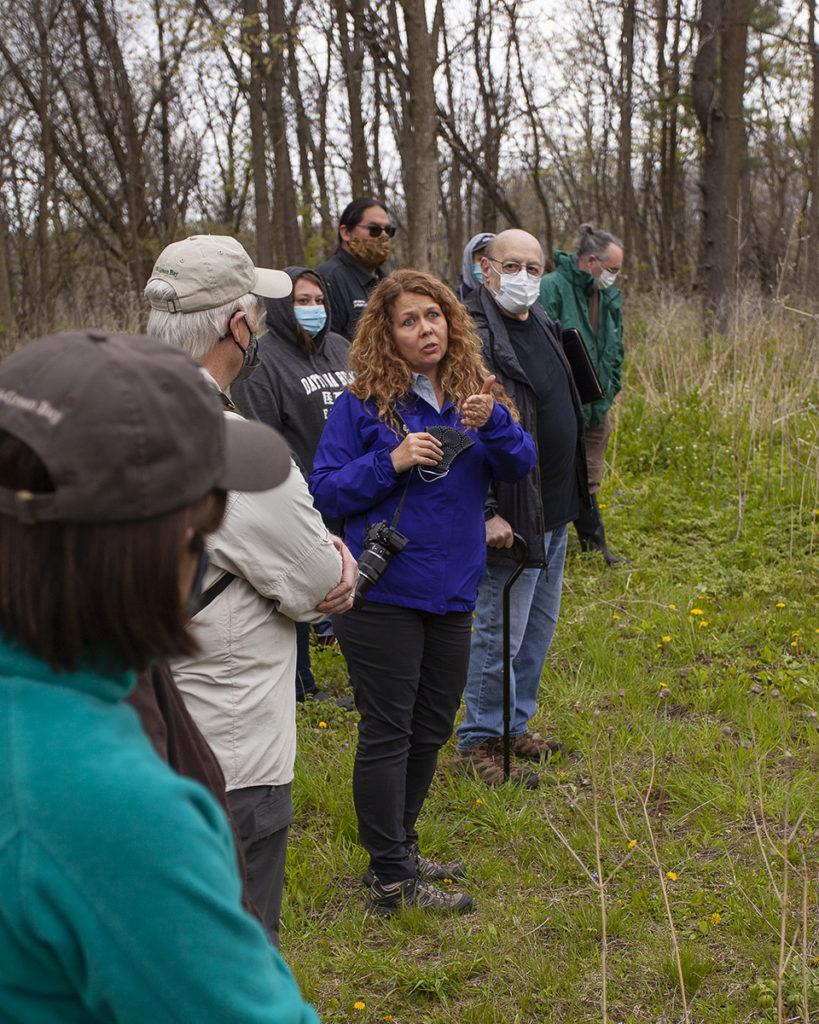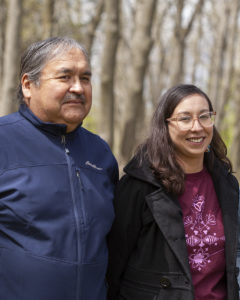
Amy Wolf speaks during the Wequiock Creek Natural Area gathering. Image credit: Daniel Meinhardt
This spring, a small but dedicated group of people gathered in the woods near the University of Wisconsin-Green Bay campus to commemorate restoration efforts that are beginning on the Wequiock Creek Natural Area.
Contributing to the restoration is Stephanie Dodge (formerly Stephanie King), a First Nations graduate assistant with Wisconsin Sea Grant. Dodge, an enrolled Oneida Nation Member, is incorporating Indigenous oral histories into work on the Wequiock Creek wetlands. The area is ancestral lands for the Ho-Chunk Nation, Menominee Nation, and Potawatomi, as well.
During the gathering of First Nations folks, Dodge listened to the group’s ideas, thoughts and feelings about what the wetlands means to them. Along with restoration team partners at the UW-Green Bay Cofrin Center for Biodiversity, Dodge shared intentions and goals for the land.
The gathering opened with a tobacco offering and Menominee prayer by David Grignon, tribal historic preservation officer with the Menominee Indian Tribe.

David Grignon and Stephanie Dodge. Image credit: Daniel Meinhardt
“It is my hope that good things happen at the site and a natural ecosystem can be developed and maintained,” Grignon said.
Dodge obtained the tobacco from a garden center near Wequiock Creek. The owners are friends of her mentor, Julia Noordyk, Wisconsin Sea Grant water quality and coastal communities outreach specialist. Dodge traded white corn flour products for it. Trading versus buying the tobacco is another example of incorporating traditional ways.
The group then toured the area and continued their discussions. The east shore of Green Bay, which includes Point au Sable, Wequiock Creek and Red Banks, remains a significant area for First Nations, who have been connected to this land for millennia.
“We hope this is just one of more gatherings and conversations to come,” said Bobbie Webster, natural areas ecologist for the Cofrin Center for Biodiversity.


